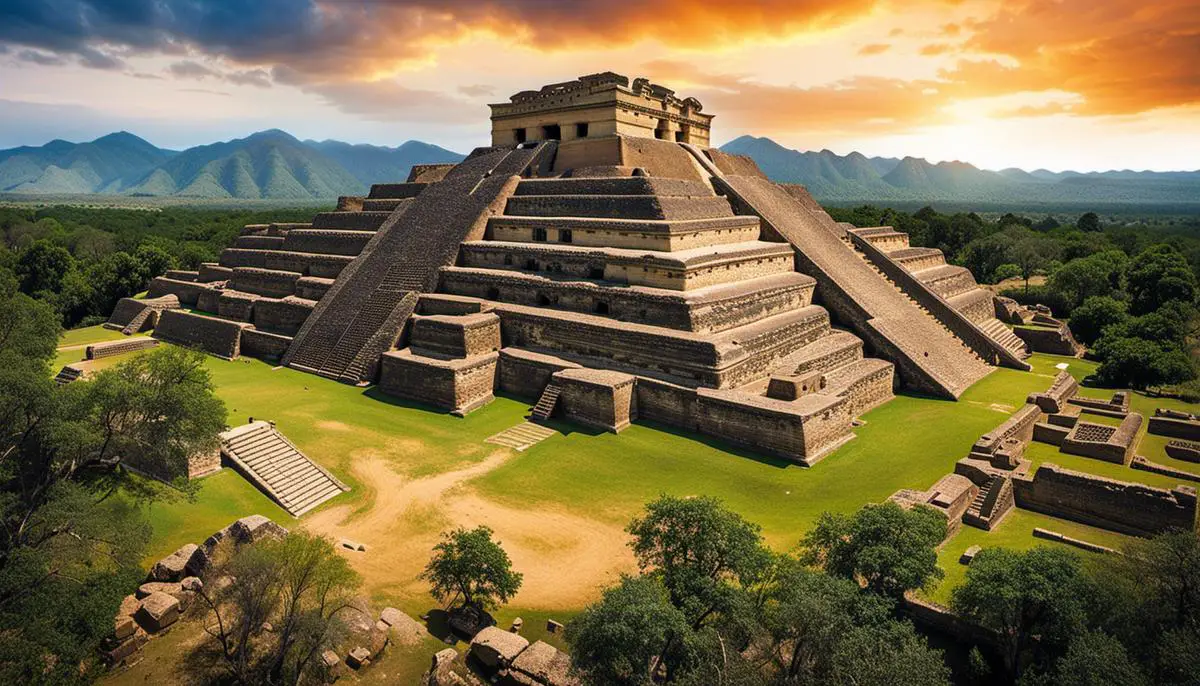The history and complexity of ancient North American civilizations offer a rich tapestry of unique cultures, advanced technologies, brilliant artwork, and intriguing sociopolitical dynamics. Delving deep into the past, we explore the luminous trail blazed by the hardy indigenous people who first called the continent home. Their intriguing saga, from the initial migration, establishment of civilizations, to the eventual decline, encompasses vital aspects such as social structures, economic systems, and cultural exchanges. Moreover, the enduring legacy they’ve passed on to modern society cannot be understated, featuring prominently in various aspects of present-day North America.
Origins and Early History
Initial Migration to North America
It is widely accepted among scholars that the indigenous peoples of North America descended from early migrants who crossed a land bridge known as Beringia, which connected Asia and North America during the last Ice Age, approximately 15,000 to 30,000 years ago. This Ice Age land bridge offered an opportunity for humans to migrate from Asia to North America, marking the initial settlement of indigenous peoples in the continent.
Early Lifestyle and Survival Strategies
The Paleo-Indians, as the first migrants are often referred to, were nomadic hunter-gatherers. They relied largely on the mega fauna existing during the Ice Age – mastodons, mammoths, and other large mammals – for sustenance. As these large mammals began to die out around 10,000 years ago, the Paleo-Indians adapted by developing a more diversified subsistence strategy. This included the hunting of smaller animals and broader collection of plant resources, which eventually led towards more settled ways of life and the beginnings of agriculture.
Establishment of the First Civilizations
Evidence of the first sophisticated civilizations in North America can be seen in complex archaeological sites that date back thousands of years. For instance, the Indigenous cultures of Mesoamerica, including the Maya and Aztecs, as well as the societies in the Mississippi River Valley such as the Cahokia, had developed large scale agricultural societies and were building monumental architecture by around A.D. 1000. The Ancestral Puebloans in the Southwest constructed vast town-sized pueblos, and had intricate cultural and economic systems.
Notable Archaeological Findings
Significant archaeological findings have helped to shape our understanding of these early periods. In particular, the discovery of Clovis points – a type of stone tool associated with the Clovis culture – across North America has established a timeline for early human presence on the continent. These tools, named after the town of Clovis, New Mexico, where they were first found, date back to over 13,000 years ago. Another key finding is the archaeological site at Chaco Canyon in New Mexico, which shows evidence of a highly sophisticated civilization around AD 850 with advances in architecture, agriculture, and trade networks.
Clovis Culture
The Clovis culture is one of the earliest known cultures in North America, dating between 13,200 to 12,900 years ago. The culture is named after the archaeological site near Clovis, New Mexico, where the first evidence of this toolmaking culture was discovered in 1932. Clovis tools were typically made from chert or obsidian and were used for hunting and butchering game.
Key Developments in Agricultural Practices
Agricultural practices began to develop significantly around 4000 years ago, which facilitated the growth of permanent settlements. Indigenous people started to cultivate squash and beans, and the domestication of corn is thought to have begun around 9000 years ago. This allowed for the support of larger populations and greater societal complexity – key elements in the transition from nomadic hunter-gatherer lifestyles to established civilizations.
Civilization Complexities
By around A.D. 1000, complex civilizations in North America had developed. These included the Mississippian culture, which built large town and city complexes in the Mississippi River Valley. Greater Southwest cultures, such as the Pueblos of Chaco Canyon, also created large settlements and developed extensive road systems, allowing for trade and communication networks to flourish.
Dissemination of Cultural Practices
Cultural practices and knowledge, including those related to agriculture, religious beliefs, pottery and weaving, were transmitted across vast distances. The complexity and sophistication of the artifact and architectural styles that emerge in the archaeological record suggest a long history of interaction among different groups of Native Americans.
Conclusion
The study of ancient civilizations in North America gives us a glimpse of the adaptability and resilience of humans in the face of ever-changing environments. This is evident in the migratory paths they followed, the evolution of their lifestyles, and the survival mechanisms they employed. Moreover, the archaeological finds they left behind stand as testaments to their societies.
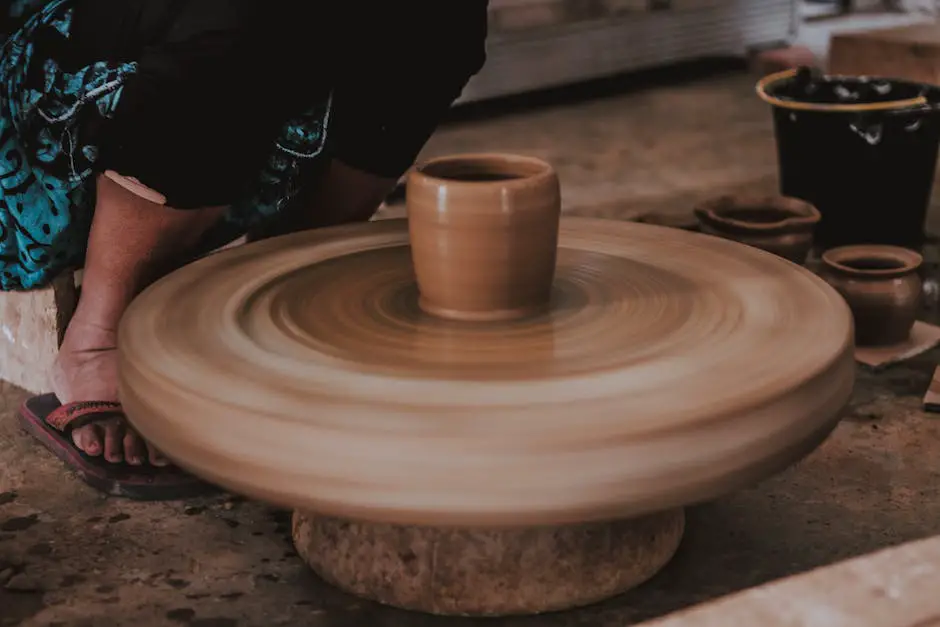
Major Ancient North American Civilizations
The Olmecs: Pioneers of Mesoamerican Civilization
As we delve into these ancient civilizations, the Olmecs deserve a special mention. Known as the “Mother Culture” of Mesoamerica, the Olmecs came into existence around 1200 B.C.E in present-day southern Mexico. They are credited with introducing sophisticated stonework and sculpture, traditions that future Mesoamerican societies continued. The gargantuan stone heads they created are believed to depict their rulers and remain today as fascinating relics of their ingenuity and skill. As an agricultural society, they cultivated maize, beans, and squash, which became staples of the Mesoamerican diet. Additionally, they devised a unique hieroglyphic writing system and a calendar system that shaped the direction of succeeding civilizations.
The Maya: Powerful Civilization of Ancient America
The Maya civilization, inhabiting present-day Mexico and Central America, existed from approximately 1800 B.C.E until the arrival of the Spanish in the 16th century. They’re renowned for their advanced writing system, architecture, astronomical systems, and their intricate calendar. Society was hierarchically structured with the king at the top, followed by nobles, priests, merchants, and peasants. Their economic system relied heavily on agriculture, supplemented by hunting and fishing. The Maya civilization constructed famous monumental structures like the Pyramid of Kukulcan at Chichén Itzá, showcasing their advanced architectural and astronomical skills.
The Hopewell: Ancient North American Trade Network
The Hopewell existed from around 200 B.C.E to 500 C.E in the regions west of the Appalachians to the Mississippi River, primarily in today’s Ohio and Illinois. Renowned for their elaborate trade networks, the Hopewell traded goods like copper, mica, obsidian, and marine shell from as far as the Rocky Mountains and the Gulf Coast. They’re known for their impressive earthworks, including mounds and geometric enclosures. Society followed a complex clan system where power was often hereditary. The primary economic activity was hunting and gathering, although evidence suggests the cultivation of some crops.
Unveiling the Anasazi: An Exceptional Ancient Civilization of North America
Between 200 C.E and 1300 C.E, the Southwest region of the United States was home to the Anasazi people. Called the “Ancestral Pueblo” people, they showcased unique skills in constructing multi-story dwellings, with the renowned cliff houses at Mesa Verde reflecting their architectural brilliance. The Anasazi culture revolved around farming, excelling in the cultivation of corn, beans, and squash on seemingly infertile lands by devising comprehensive irrigation systems. This society was divided into summer people, who dedicated themselves towards farming, and winter people, whose focus lay in honing crafts and trade. Their economy was supported by the dual pillars of farming and trading, and their intricate pottery and woven textiles serve as a testament to their advanced craftsmanship.
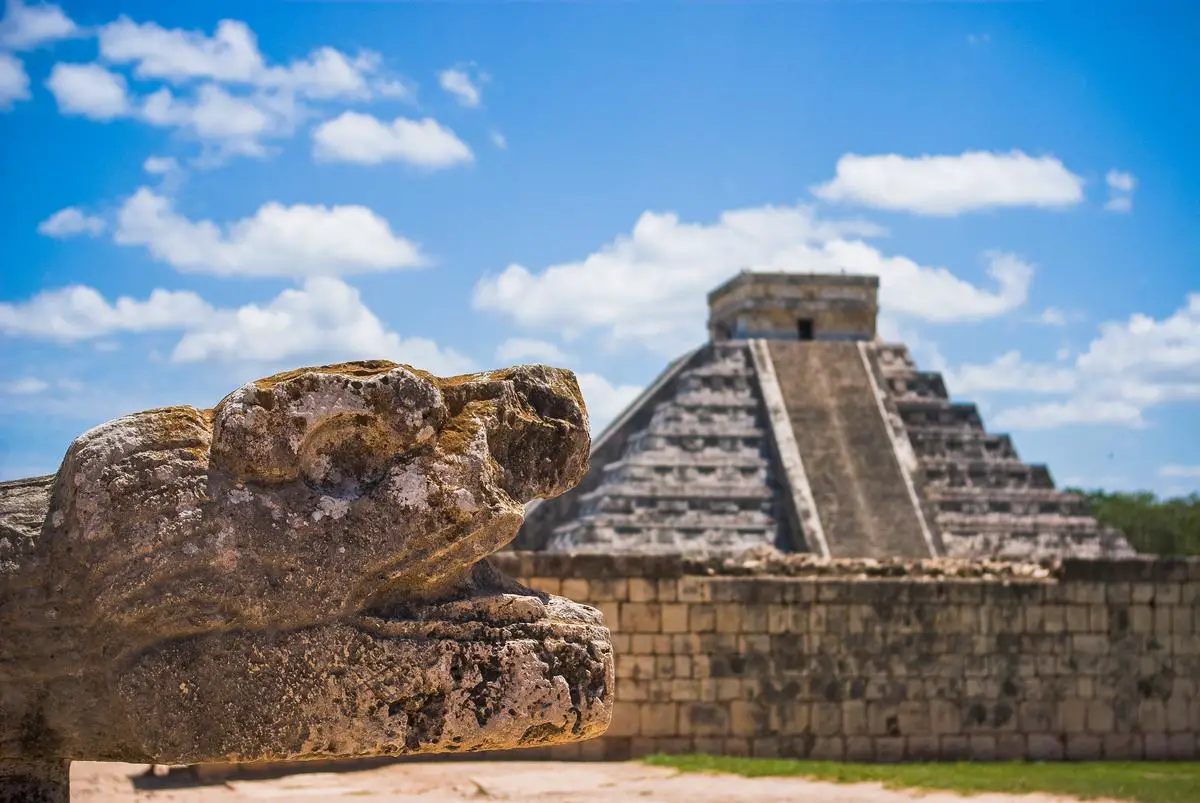
Photo by mrvphotography on Unsplash
Art, Architecture, and Achievements
The Architectural Marvels of Ancient North American Civilizations
Ancient North American civilizations, notably the Mound Builders and the Pueblo people, left indelible marks in the realm of architecture. The Mound Builders, essentially a group of diversified cultures, constructed magnificent earthen mounds that were used for a myriad of purposes, from ceremonial to burial grounds. Certain mounds, like the ones dotting the landscape at Cahokia and the Serpent Mound, echo the complexity of their design and construction, and intricately illustrate the spiritual and social beliefs of their creators.
The Pueblo people, indigenous to the Southwest, are famed for their monumental multi-storied houses known as “pueblos”, crafted from robust stone and adobe materials. The Anasazi, a distinguished descendant of the Pueblo, are widely acknowledged for their awe-inspiring cliff dwellings, particularly those at Mesa Verde, Colorado. Their constructions offer an insightful glimpse into the ingenious ways in which these ancient civilizations integrated their structures with the natural environment.
Artistic Endeavors of Ancient North America
Art was another significant aspect of ancient North American civilization, evident in various mediums like pottery, weaving, stone carving, and even body decoration. The Hopewell tradition, associated with the mound-building cultures, produced beautiful works of pottery and crafted intricate art from materials like mica and obsidian. Body decoration, such as tattooing and piercing, were also prevalent among many tribes, which served both aesthetic and ritualistic purposes.
The Haida people of the Pacific Northwest were skilled carvers, creating magnificent totem poles out of giant red cedar trees. These totem poles served various purposes, from recounting family histories, to marking important sites, to serving as spiritual reminders.
Technological and Agricultural Advances
The ancient North American civilizations were also marked by considerable technological and agricultural advancements. For instance, the Hohokam in present-day Arizona developed complex systems of irrigation canals, enabling them to cultivate crops in the arid desert environment.
The Mayans, although more associated with Central America, did have an influence in the southern part of what is now the United States. They introduced significant agricultural inventions, such as terracing and crop rotation, which greatly boosted crop yields and agricultural efficiency.
Moreover, the natives of the Great Plains region were innovators in engineering technology. The invention of the travois—a type of sled used for transportation—facilitated migration and trade. The Plains Indians were also highly skilled in the art of making tools and weapons from local resources.
Ceremonial Outfits and Textile Achievements
Fashion and textiles in the ancient North American cultures were not only practical but also held significant cultural and ceremonial importance. The Plains Indians, for instance, were known for their elaborately decorated war bonnets, which signified bravery and were worn by leaders. Further, the Navajos were skilled weavers and produced intricate textiles, even developing a type of waterproof fabric.
Delving into ancient North American civilizations, one can uncover the rich and intricate tapestry of their unique cultures. An exploration of their architecture, art, technology, agriculture and ceremonial outfits provides a comprehensive understanding of their remarkable achievements and complex societies.
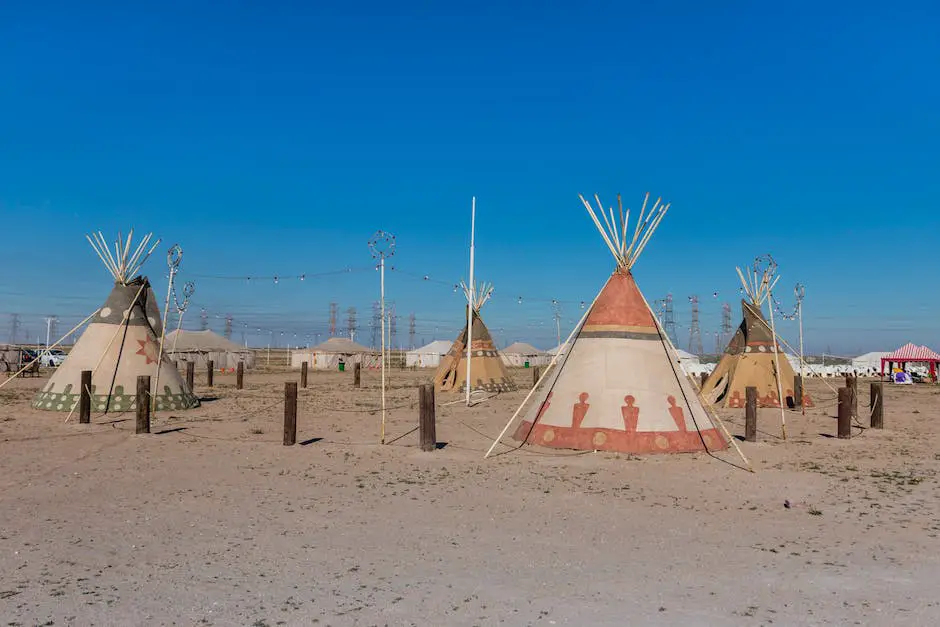
Interaction and Warfare
The Intertwining of Cultures in Ancient North American Civilizations
A deeper dive into these civilizations, including the Hopewell, Mississippian, and Ancestral Puebloan societies, reveals a network of extensive interactions and cultural exchanges. These dynamic relationships, ranging from peaceful commerce to aggressive conflicts, played a significant role in shaping their distinct identities and shared histories. This interchange involved more than the trade of physical goods like food, tools, pottery, and clothing, but also the exchange of abstract concepts like ideas, art, and cultural customs.
Trading Networks and Cultural Diversification
Trading networks were significant for these civilizations. Evidence suggests that shells from the Gulf Coast region found their way into the Midwest, indicating the extent of these trade networks. These complex networking systems facilitated societal growth and cultural diversification, interjoining regions with distinct resources and cultures.
Warfare, Weaponry, and Defense Systems in Ancient North America
Conflicts and warfare were foundational elements in the history of ancient North American civilizations. These were often triggered by disputes over resources, territorial disagreements, political power struggles, or spiritual and cultural differences. They heavily influenced the development of weaponry and defense systems.
Weaponry from this period included spears, bows and arrows, knives, and club-like objects, often made from stone, bone, wood, and later, metals. Defensive strategies evolved over time, with tribes utilizing natural landscapes for protection and constructing fortified villages and earthworks. Sophisticated fortification structures such as palisaded enclosures and moats are characteristic of the Mississippian culture, prominently seen at sites like Cahokia and Moundville.
Power Conflicts and Alliances
Power conflicts and alliances were key influences on inter-civilizational interactions. Alliances were usually formed for mutual benefit in trade or defense against a common enemy. However, these alliances were often fluid and could change due to shifts in power dynamics or betrayal.
The Iroquois Confederacy, also known as the Five (and later Six) Nations, stands as one of the most renowned alliances in ancient North America. Comprising of various Iroquoian-speaking tribes, the Confederacy exerted immense power and influence from its formation around 1400 CE up until European contact.
Tensions and power conflicts often erupted into warfare, leading to fluctuations in territorial boundaries, population centres, and cultural dominance. The archaeological site of Spiro Mounds, Oklahoma, presents evidence of warfare and violent conflict, representing a period of social destabilization.
European Contact and its Effects on Ancient Civilizations
The lives of those belonging to ancient civilizations in North America were deeply affected when Europeans made contact. From the late 15th century, this contact brought forth intense colonization, forced religious conversion, and exposure to unfamiliar diseases. As a result, massive drops in population numbers occurred among the indigenous people and dramatic transformations reshaped their cultures. Despite this, elements of these ancient civilizations have been preserved in modern Native American tribes and can be seen in their cultural practices, art, and oral histories.

Decline and Impact on Modern Society
Elements Contributing to The Decline of Ancient Civilizations
The decline and eventual disappearance of many ancient North American civilizations, such as those of the Mayans, Aztecs, and Mississippians, is a major focus of historical research. Archaeological findings suggest that the decline of these civilizations resulted from a blend of environmental factors, warfare, political instability, and social unrest. Post-European contact, these issues became even more prevalent, further accelerating the decline of these complex and rich societies.
Influence on Contemporary Society
While these ancient civilizations declined, their influence tends to persist in modern North-American culture. This is seen in the adoption of certain farming techniques, architectural practices, and cultural traditions. Corn, beans, and squash, also known as the “Three Sisters,” were staples in ancient North American agriculture, and they continue to be central to the American diet today.
In regards to architecture, the Inuit peoples’ technology and adaptation to harsh conditions can be seen in many contemporary building designs in cold climates. Adobe architecture from Southwestern tribes is still widely used in that area today and the iconic step-pyramids built by the Mesoamerican civilizations have influenced modern architectural styles.
Cultural Continuity and Beliefs
The cultural practices and beliefs of these ancient civilizations continue on in modern-day indigenous communities in various ways. The oral tradition of storytelling, for instance, was a vital cultural practice amongst many ancient North American civilizations and remains central to many indigenous communities.
In a spiritual aspect, many indigenous tribes today still honor the belief systems of their ancestors, with spiritual ceremonies and festivals rooted in ancients traditions. For example, practices like smudging and sweat lodges that were practiced by ancient North American indigenous people for spiritual cleansing and purification are still very prevalent in today’s native communities.
Influence on Modern-Day North America
Overall, these ancient civilizations continue to shape modern-day North America, not just in the indigenous communities, but across the entire continent. They have had a profound impact on the way we understand our history, our relationship with the environment, and our approach to societal structure. Our understanding of everything from astronomy to agriculture and technology has been touched by their influences.
Moreover, studying the decline of these ancient civilizations provides us with unique insights into the challenges they faced, which often parallel those we see today, such as climate change, resource management, and social inequality. These insights can potentially guide us towards creating a more sustainable and peaceful future.
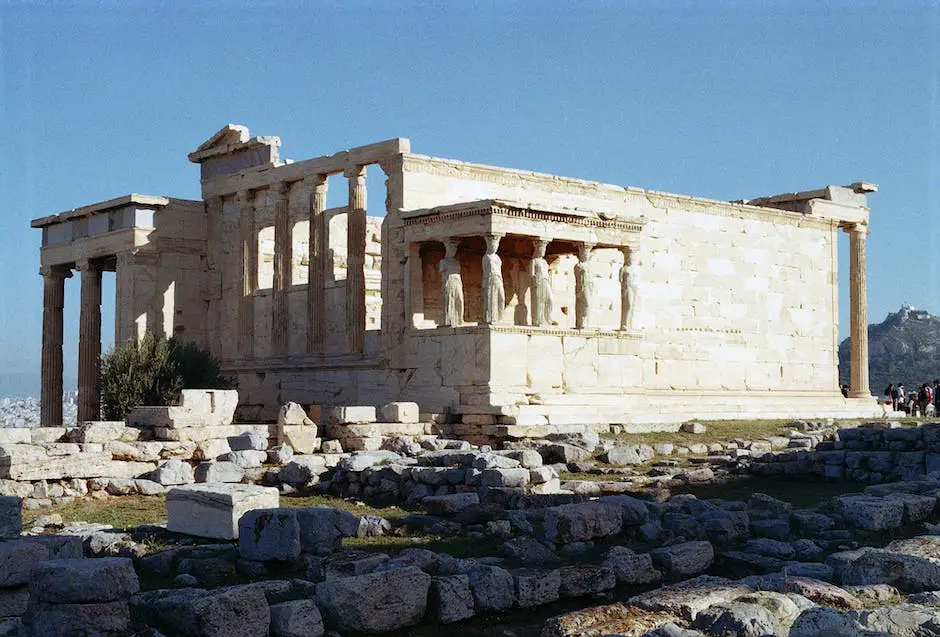
Reflecting on the ancient North American civilizations, it becomes clear that unique cultures crafted extraordinary legacies. Whether it was through their advanced technologies, enduring artwork, or brilliant architectural wonders, they significantly contributed to humanity’s shared heritage. Their trials, tribulations, and triumphs were also influential, shaping the interactions and warfare dynamics between different societies. The echoes of their decline persist today, triggering contemplation and discussions. Ultimately, the continuous resonance of their cultural practices and core beliefs in contemporary indigenous communities serves as a testament to their enduring spirit and unparalleled impact.
FAQ
What is the oldest civilization in the North America?
With an estimated age of between 1400 and 400 BCE, the Olmec civilization is recognized as one of the earliest in North America. The Olmec people left behind a rich cultural legacy, living mostly in what is now known as modern-day Mexico, especially in the tropical lowlands of the Gulf of Mexico. The Olmecs, who are renowned for their enormous stone sculptures, enormous heads, and advanced agricultural techniques, were crucial to the growth of Mesoamerican civilizations. They had an impact on following civilizations like the Aztecs and Maya. Although the Olmec civilization is regarded as one of the oldest in North America, it is important to remember that for thousands of years, other indigenous cultures with unique histories and contributions coexisted throughout the continent. Nonetheless, the Olmecs are notable for having been early adopters of the region’s artistic and cultural traditions.
What ancient civilization was found in North America?
The Cahokia civilization is one of the major prehistoric societies in North America. The Cahokia people, who flourished between 600 and 1400 CE, constructed the sophisticated Cahokia Mounds urban complex, which is situated close to Collinsville, Illinois. At its height, Cahokia, with its clay mounds, plazas, and intricate network of structures, was one of the most important pre-Columbian towns north of Mexico. Monk’s Mound, the biggest of these mounds, functioned as a colossal stage for ceremonial and administrative operations. With evidence of commercial networks and cross-cultural connections spanning the Mississippi River Valley, Cahokia commanded a huge territory. A number of ancient cultures and civilizations, each with its own history and contributions, occupied different parts of North America prior to the advent of European settlers, among which Cahokia is a well-known example.
What are the 4 major ancient American civilizations?
The Aztec, Maya, Inca, and Olmec civilizations are the four main ancient American civilizations, each having unique cultural and historical significance. From the 14th to the 16th centuries, the Aztecs flourished in central Mexico, founding the influential city of Tenochtitlan and building a sophisticated civilization with sophisticated agricultural techniques and striking architectural accomplishments. The Yucatan Peninsula and Central America were home to the Maya civilization, which flourished from 2000 BCE to 1500 CE and left behind amazing accomplishments in mathematics, astronomy, and hieroglyphic writing. During the 15th and 16th centuries, the Inca civilization flourished in the Andes Mountains of South America. They created an extensive empire that is renowned for its elaborate road system and agricultural terraces, as well as for engineering marvels like Machu Picchu. The Olmec civilization, which flourished in modern-day Mexico between 1400 and 400 BCE, is sometimes cited as a model for succeeding Mesoamerican societies because of its monumental stone sculptures and ceremonial customs. Historians and archaeologists are still fascinated by the persistent legacies of these four civilizations, which played significant roles in forming the cultural landscape of the Americas.
![]()
